Part II. Die Varieties:
Doubled Dies:
Class I (Rotated Hub Doubling):
This class of doubled die is probably the easiest to conceptualize and diagnose. It emerges from two separate hubbings. Prior to the second hubbing, the working hub or the working die rotates around its vertical axis (the axis that passes though the center of the hub/die face). Class I doubled dies are listed as showing a clockwise (CW) or counter-clockwise (CCW) rotation. The direction is determined by which hubbing is clearest and most complete. This is usually the second hubbing (which tends to be deepest). Exceptions do exist, however.
Doubling typically has a rounded appearance. When the hubbing impressions are extremely close, the doubled die may only be recognizable from notched serifs and corners, subtle separation lines, or extra thickness.
Below is an overlay diagram of a fictitious Class I doubled die that has a clockwise rotation similar to the King of Doubled Dies, the 1955P DDO-001. Notice how the spread is equal on all devices and increases the farther out you go from the center of the coin. DDO refers to a doubled die that affects the obverse face of a coin. DDR refers to a doubled die that affects the reverse face of a coin.
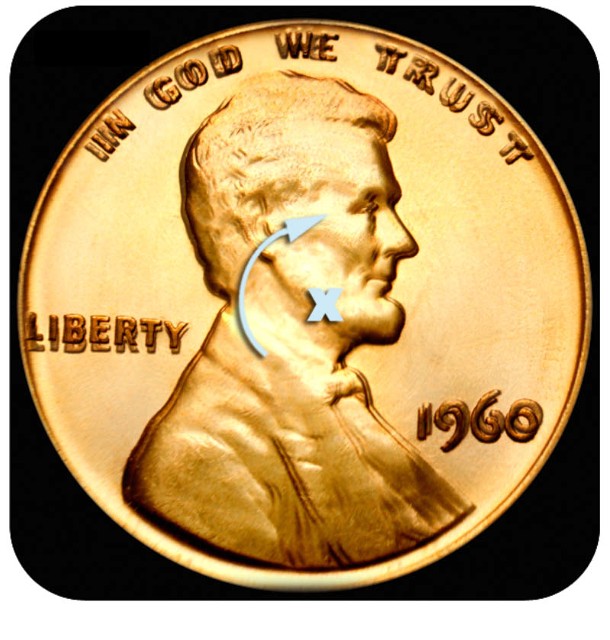
Below are photos of 1972P DDO-001, a Class I DDO with a strong CW spread on all outlying devices and parts of the jacket. A second hubbing typically eliminates interior parts of the design produced by the first hubbing. Therefore doubling is often only detectable in areas bordering the field. Here, only the outside elements of the portrait of Lincoln and the motto show doubling while the centrally-located details are lost to the second hubbing.
Hubbings are ordered from lightest to deepest, either CW or CCW. On the G of GOD you can see that the heavier of the duplicate letters (G-2) is located to the right (clockwise) of the lighter letter (G-1). It is likely that the heavier letter represents the second hubbing, but this cannot be proven.
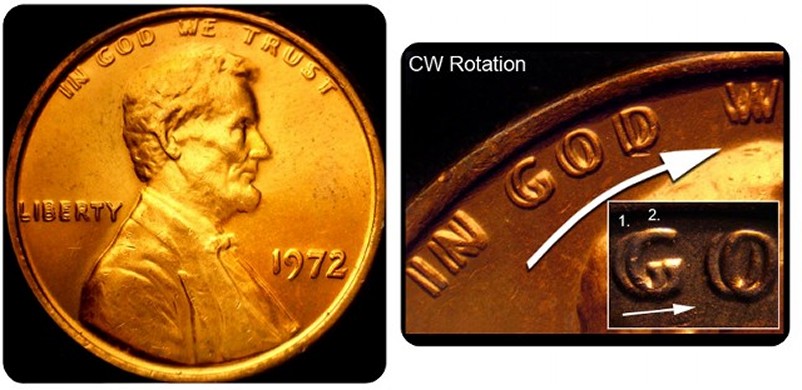
Below you can see clear separation between the letters of TRUST. On the first few digits of the date, where design elements are more closely bunched (due to being closer to the center of the design), distinct notching can be seen at the upper and lower corners of numeral 1.
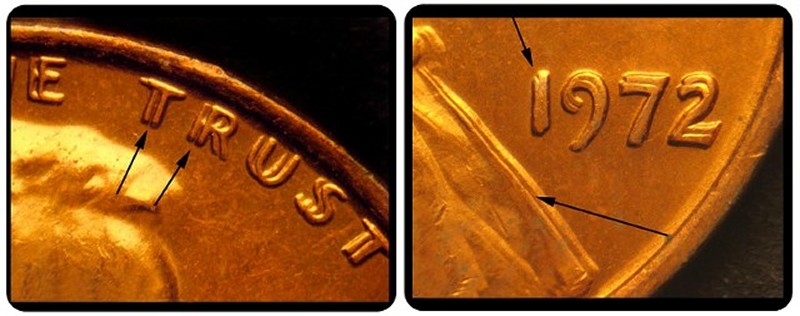
Below is a Class I doubled die on the reverse face of a 1964 cent ( 1964P DDR-001). It shows a counterclockwise (CCW) spread. Again there is clear separation, notching, and rounded doubling. The doubling is strongest in “STATES oF” due to the axis of rotation being located slightly south of center.
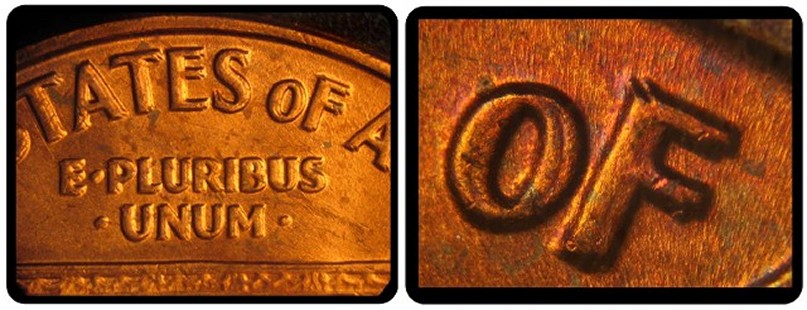
The next example is a DDR on a 1979 Israeli 25 agorot. The spread, best seen in the Hebrew letters located near k12, is elsewhere indicated by notches and subtle separation lines. As would be expected of any Class I doubled die, the doubling is weakest toward the center and strongest toward the perimeter of the coin.
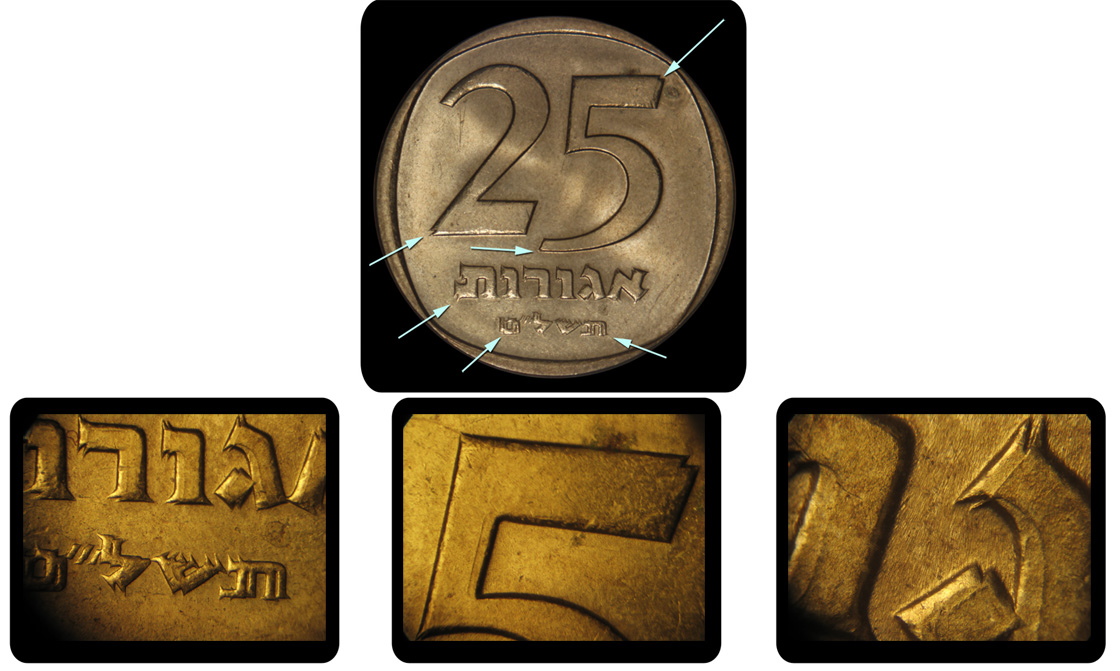
Notching of corners and serifs reflects the presence of closely-spaced letters and numbers. Often there is a difference in height as well between the closely overlapping design elements. Below is a 1934-D quarter listed as DDO-001 that shows very obvious stepped notching in IN GOD WE TRUST. Subtle doubling, also in the form of notching, is evident on all the peripheral design elements. Detailed photos presented below depict notching in the E of LIBERTY, as well as the 3 of the date.
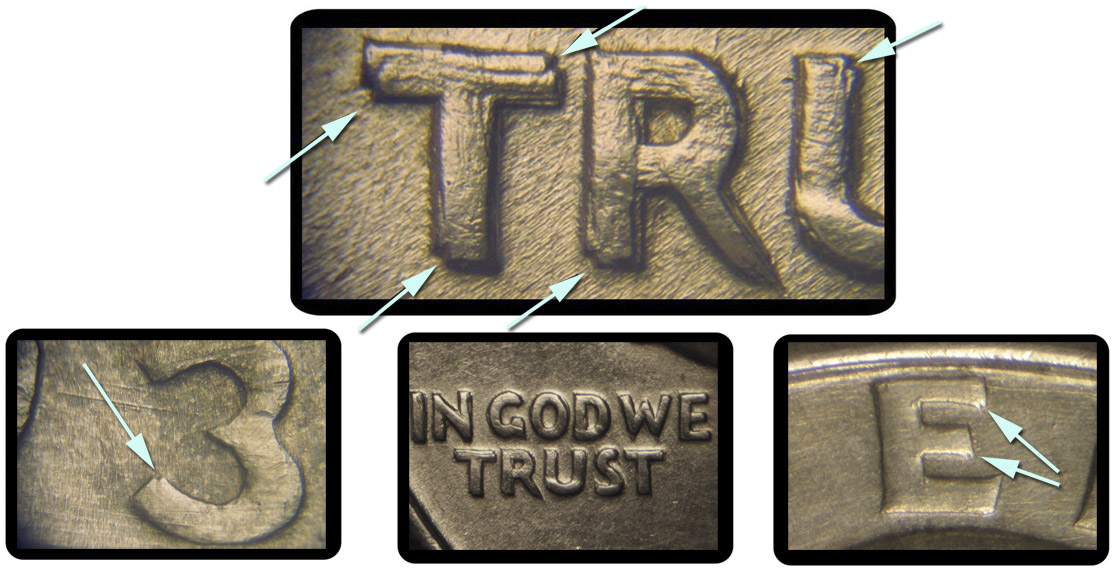
NOTCHES EXPLAINED:
If a die shows hub doubling and there is a rotational shift, the notches will be more apparent. The following illustrations show a hypothetical CCW rotation with Red being the first hubbing and Green the second. The green letters are also slightly south (or down) in relation to the red. While the spread is minor, the notches are obvious. Rounded portions of letters (like the o and S) show the development of a secondary, offset ellipse.
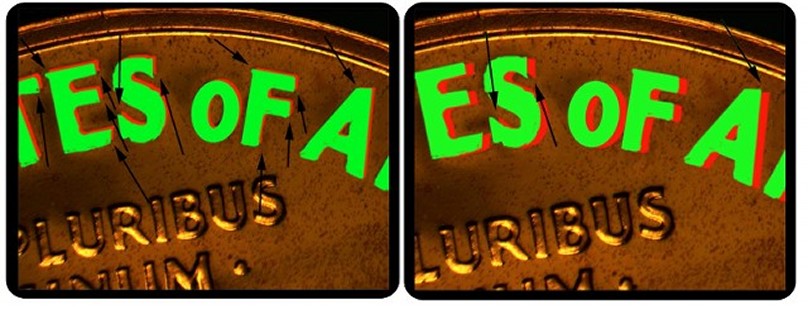
Now we will see a stronger CCW spread where there is very little degree of offset between the hubbings. The result is fewer notches overall, but where the design drops off, such as the serifs on the S or the top of the A, there will be
minor notching or splits. Below are some notching diagrams that will give you an idea of where Class I (and also Class V) hub doubling can produce notches.
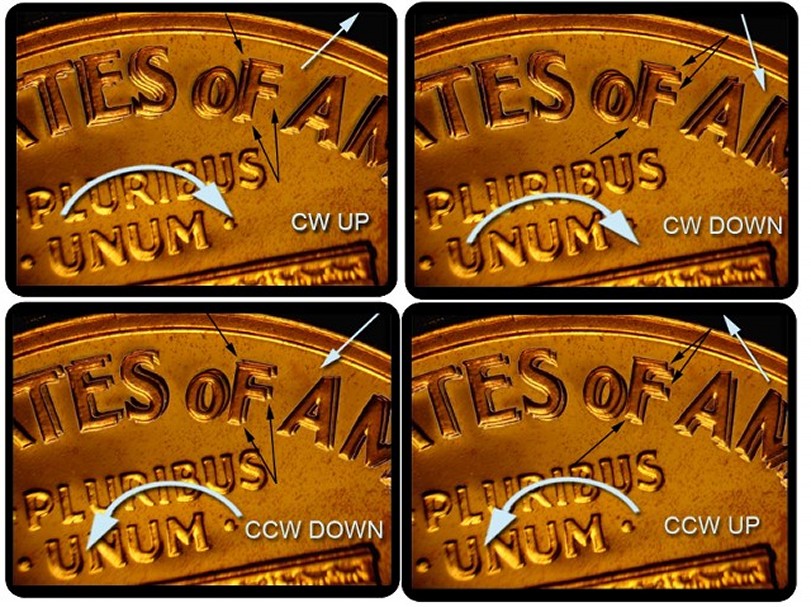
Below are examples of Class I Doubled Dies on various Lincoln cents. 1941 DDO-001

1941 DDO-002

1936 DDO-001

1971 DDO-002

On to CLASS II
All doubled die illustrations are by Jason Cuvelier